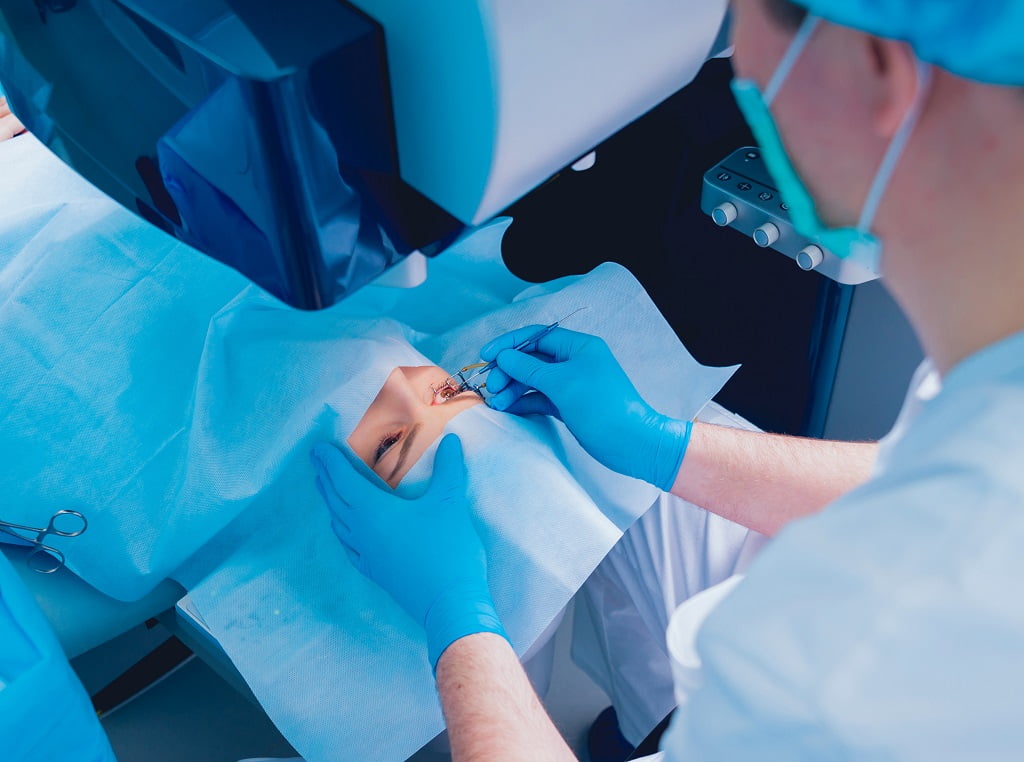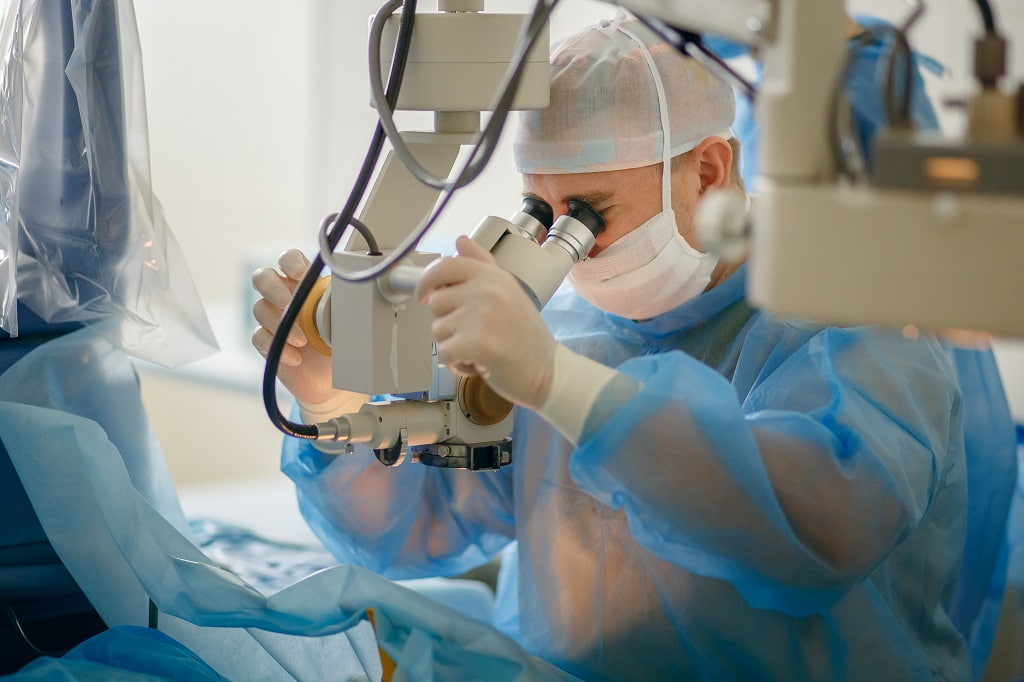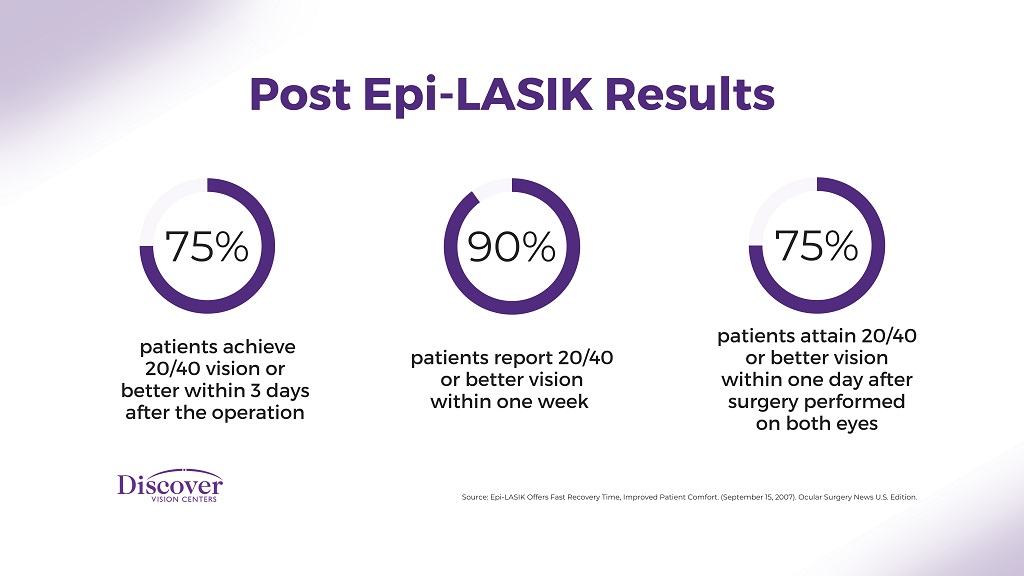
Updated: April 16, 2025

Exploring the minor and major differences between LASIK and Epi-LASIK is an important step for anyone considering laser vision correction. To make it easier for you, we’ve written this overview which delves into the distinct characteristics and benefits of each procedure, offering insight into how they differ in approach and outcomes.
With Discover Vision’s expertise in advanced eye care, this guide aims to clarify these differences and assist you in making a well-informed decision about which vision correction method aligns best with your individual needs and lifestyle.
Let’s look in-depth into how these procedures work, detailing their distinct methodologies and the advanced technology involved.
LASIK, short for Laser-Assisted In Situ Keratomileusis, begins with the creation of a thin flap on the cornea using a femtosecond laser. This flap is essential for accessing the cornea’s underlying tissue. An excimer laser is then used to precisely reshape this tissue, correcting refractive errors and focusing light more accurately on the retina.
The procedure takes less than 10 minutes per eye and the process includes pre-operative preparations like corneal topography and thickness measurements, and the use of numbing drops and a device to prevent blinking. After the excimer laser reshapes the cornea, the flap is repositioned, acting as a natural bandage.
This efficient and effective method has become a popular choice for reducing reliance on glasses or contacts.
In Epi-LASIK, the key difference from LASIK is the ability of the laser to correct the eye’s refractive error without the formation of a traditional corneal flap. This procedure uses an epithelial separator to gently lift the top layer of epithelial cells from the cornea. This is particularly advantageous for patients with thin corneas, where preserving the integrity of the corneal tissue is crucial. The excimer laser then reshapes the exposed corneal tissue. In the Epi-LASIK procedure, the initial step includes the application of anesthetic eye drops, followed by the creation of an epithelial flap using the epithelial separator device. Once the flap is created, it’s carefully managed during the surgical process. The flap is repositioned after the laser tissue reshaping. A bandage contact lens is typically placed to help with comfort postoperatively and to allow the epithelial flap to readhere.
Post-surgery, the treatment plan involves administering pain relief and antibiotic eye drops to ensure a smooth healing process and safeguard the eye’s health. Epi-LASIK falls under the category of surface ablation procedures, which are known for their ability to correct vision without the need for deep corneal alterations.

If you’re trying to figure out which is a more suitable laser vision correction option for you, LASIK or Epi-LASIK, you’ll need to consider your unique circumstances. This assessment ensures that the chosen procedure aligns well with the individual’s specific eye condition and lifestyle.
It’s important to understand that the quality of the patient’s final vision is greatly influenced by how well they adhere to their post-operative care regimen.
LASIK recovery involves managing temporary discomfort and ensuring the proper healing of the LASIK flap. Patients may experience sensations like burning or light sensitivity, which usually subside within a few hours. Most individuals can resume normal activities the day after surgery. The use of over the counter pain relievers and following the eye doctor’s instructions, including the use of prescribed eye drops, will encourage a swift and effective healing process.

The Epi-LASIK healing process focuses on the regrowth of epithelial cells and may include the repositioning of the thin flap or the application of a bandage contact lens to aid healing. Initial vision might not be perfect, with many patients achieving significant improvement within days, and the full visual outcome may take longer compared to LASIK. Adhering to the eye doctor’s guidance, using eye drops, and attending follow-up appointments are a must for Epi-LASIK patients.
LASIK and Epi-LASIK, while distinct in technique, share common risks such as dry eyes, glare, and night vision difficulties. Both procedures may also involve complications like undercorrection or overcorrection of vision, and in rare cases, infection or vision loss. While Epi-LASIK aims to reduce flap-related issues that are possible with LASIK, it still carries risks associated with corneal healing and visual accuracy.
When comparing the costs of LASIK and Epi-LASIK, both procedures are similarly priced, beginning around $2,000 per eye. However, the final cost can vary based on individual medical needs, the level of customization during the surgery, the experience and fees of the eye doctor, and geographical location. Financing options are available at Discover Vision Centers.
Given LASIK’s high success rate and shorter recovery time, it might prove more cost-effective in the long term to have laser vision correction surgery instead of the continued expenses associated with prescription glasses and contact lenses.
If you’re contemplating laser vision correction, make sure to consult with an eye care professional. Discover Vision specializes in LASIK and other refractive surgeries, offering expert guidance to help you choose the option that best suits your vision needs and lifestyle. For personalized advice and to explore your laser vision correction options, we encourage you to schedule a consultation with us today.